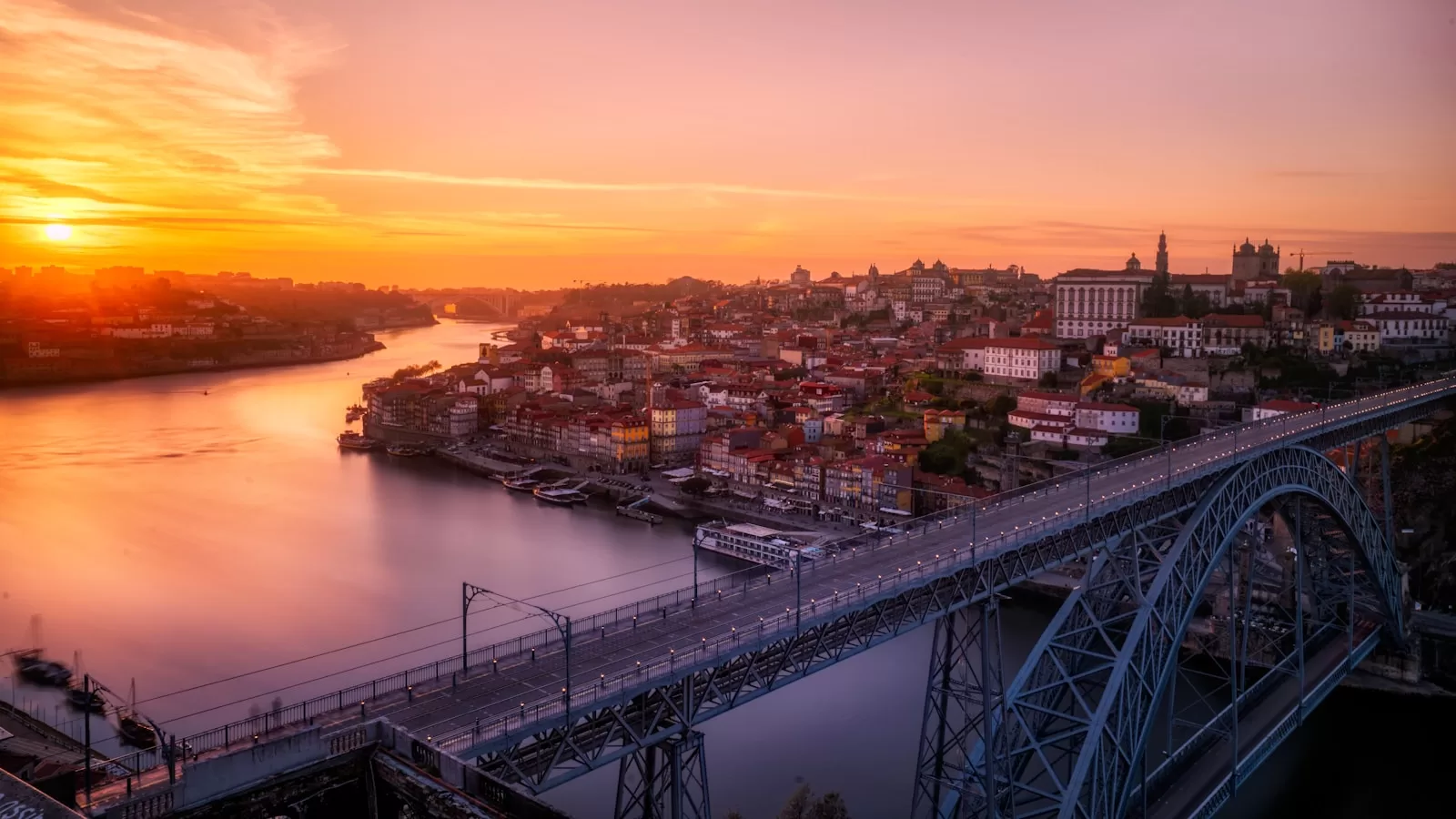Portugal is a country brimming with history, culture, tourism, and stunning landscapes, but its cities are where the real magic happens. This country borders Spain. Whether you’re drawn to the bustling streets of Lisbon or the historical charm of Coimbra, each city in Portugal offers a unique experience. Let’s dive into the most significant cities in Portugal that you need to know about.
Portugal’s cities, each with their own unique charm and historical significance, play a vital role in the country’s identity. With Lisbon holding the prestigious title of the capital city, its sprawling metropolitan area is a dynamic hub of culture and commerce in Southwestern Europe. As part of the western Iberian Peninsula, which includes places like Porto and Sintra, it reflects a rich blend of historical and modern influences. City status in Portugal often highlights the importance of these urban centers, not just within the country but also in the region and broader context of European heritage and development.
Largest City in Portugal

Regarding size and location, Portugal’s biggest populations offer residents a mix of bustling metropolises and charming urban centers. These Portuguese municipalities are mostly in the Porto and Lisbon regions. The expansion of these towns is because of the rivers.
Lisbon: The crown jewel and largest city of Portugal, Lisbon boasts a metropolitan population of 2.87 million. As the nation’s capital, it’s a hub of activity, offering everything from historical landmarks to vibrant nightlife.
Porto: Portugal’s second-largest city, Porto district, has a metropolitan population of 2.42 million. Known for its stunning riverside views and rich history, Porto is a must-visit for anyone traveling to Portugal.
Vila Nova de Gaia: This city, which has a population of 300,000, is located just south of Porto. It’s famed for its wine cellars, where the world-renowned port wine is aged.
Amadora: A crucial part of Greater Lisbon, Amadora has a population of 172,000. Despite being a smaller city, it’s densely packed with residential areas and local businesses.
Braga: Situated in the northwest of Portugal, Braga is home to 193,000 people. Known as the “Portuguese Rome” for its abundance of churches, this city blends history and modernity.
Cities with Major Historical Importance

Portugal’s main cities are not just large; they are steeped in history that dates back centuries.
Lisbon: As one of the major urban areas within the European Union, Lisbon is a cultural and tourism hub in Western Europe. Its rich history is evident in every corner, from the ancient castle of São Jorge to the iconic Belém Tower.
Porto: One of the oldest urban settlements in Europe, it is a UNESCO World Heritage Site. The city’s historic center tells the story of its past at every turn.
Vila Nova de Gaia: While it may be known for its fortified wine, also has a deep historical connection to the production and trade of port wine, a crucial part of Portugal’s cultural heritage.
Braga: With its numerous historical buildings and museums, Braga is a tourism hub for those interested in Portugal’s religious and cultural history.
Coimbra: Coimbra has a rich history dating back to the 12th century. As the home of one of the oldest universities in the world, it has long been a center of learning and culture in Portugal.
Atlantic Ocean Coastline Cities

Portugal’s western coast is dotted with cities and towns offering urban experiences and stunning ocean views.
Lisbon: Positioned on Portugal’s west coast along the River Tagus, Lisbon opens up to the Atlantic Ocean, providing breathtaking coastal views and easy access to beaches.
Porto: Located about 310 kilometers north of Lisbon, Porto’s coastline along the Atlantic Ocean is as much a part of its identity as its wine and historic sites.
Vila Nova de Gaia: Located south of Porto, this city enjoys a prime spot along the Atlantic, and its beaches and waterfront areas draw both locals and tourists.
Funchal: The capital of Madeira Island, Funchal, is surrounded by the Atlantic Ocean. This city is a gateway to the natural beauty of the Madeira archipelago.
Cascais: A charming city located near Lisbon, Cascais is famous for its stunning coastline and has long been a favorite getaway for both locals and international visitors.
Most Populated Cities in Portugal

Population doesn’t always equate to the size of the biggest city yet, but it indicates a good infrastructure, population, and these other cities” bustling nature.
Lisbon: The most populated city in Portugal, Lisbon has 545,000 people. Its vibrant atmosphere reflects the capital’s diversity and dynamism.
Porto: With 287,000 residents, Porto is the second most populated city. Its population contributes to the lively, energetic feel that permeates the city’s streets.
Vila Nova de Gaia: With a population of 302,295, this city is the third most populated in Portugal. Its blend of residential and commercial areas draws people in.
Amadora: Amadora ranks fourth in population, with 175,136 people. Its dense urban landscape makes it a crucial part of the Greater Lisbon area.
Braga: Rounding out the top five, Braga has a population of 181,494. Its mix of history, culture, and modern living makes it a vibrant city to explore.
What are the 10 largest cities in Portugal?

Portugal’s largest cities are vibrant hubs that showcase the country’s rich history, diverse culture, and dynamic growth. From Lisbon’s bustling streets to Porto’s historic charm, these urban centers offer a unique blend of old-world charm and modern living. Each city’s distinctive character and atmosphere is crucial in shaping Portugal’s identity. Whether you’re exploring the picturesque landscapes of Sintra or the coastal allure of Vila Nova de Gaia, Portugal’s most prominent cities provide a captivating glimpse into the heart of this fascinating country.
Largest Cities by Population:
Lisbon – Approximately 545,000 inhabitants
Porto – Approximately 287,000 inhabitants
Vila Nova de Gaia – Approximately 302,000 inhabitants
Amadora – Approximately 175,000 inhabitants
Braga – Approximately 181,000 inhabitants
Coimbra – Approximately 143,000 inhabitants
Sintra – Approximately 385,000 inhabitants
Funchal – Approximately 112,000 inhabitants
Setúbal – Approximately 118,000 inhabitants
Queluz (part of Sintra municipality) – Approximately 104,000 inhabitants
Largest Cities by Land Area:
Lisbon – 100.05 km²
Sintra – 319.2 km²
Porto – 41.42 km²
Vila Nova de Gaia – 168.46 km²
Amadora – 23.79 km²
Braga – 183.4 km²
Coimbra – 319.4 km²
Funchal – 76.15 km²
Setúbal – 230.33 km²
Cascais – 97.4 km²
Note: Some of the locations in these cities, for example like Sintra, are parts of larger municipalities, so the urban population, and area figures can reflect the broader municipal area rather than just the urban center.
What is the prettiest city of Portugal?
The title of the prettiest city in Portugal is often subjective, but Sintra frequently tops the list. Nestled in the hills near Lisbon, Sintra is renowned for its fairy-tale-like palaces, lush gardens, and stunning landscapes. The Pena Palace, with its vibrant colors and unique architecture, along with locations such the mystical Quinta da Regaleira, make Sintra a picturesque and enchanting destination.
What are the five cities in Portugal?
The five most prominent cities in Portugal, known for their size, influence, finance, education, media, tourism, and cultural significance, are:
Lisbon – The capital and largest city, known for its historic sites, vibrant culture, and stunning views.
Porto – Famous for its wine production, historic architecture, and scenic Douro River.
Sintra – A picturesque town known for its palaces and natural beauty.
Braga – One of the oldest cities in Portugal. It is rich in religious history and historic architecture.
Coimbra – Known for its prestigious university, one of the oldest in Europe.
Most popular tourist cities in Portugal?
The most touristic cities, villages and towns in the centre and north of Portugal, attracting both international companies and local visitors, are:
Lisbon – The capital city is a top destination for its historic neighborhoods, museums, and vibrant nightlife.
Porto – A favorite for its wine, riverside charm, and historic city center.
Sintra – A must-visit for its stunning palaces, castles, and beautiful landscapes.
Funchal – The capital of Madeira Island, known for its natural beauty, gardens, and wine.
Albufeira—Located in the Algarve, Albufeira is popular for its beautiful beaches, lively nightlife, and family-friendly attractions.
Exploring Portuguese Cities

Portugal region’s urban landscape is a fascinating mix of ancient and modern. With 159 locations considered cities, the country’s urban areas have developed for centuries. Some towns were even elevated to their status as recently as the 1980s, reflecting Portugal region’s evolving urban identity in recent years.
It’s important to note that in Portugal, a city is not an administrative division of territory; instead, it’s a designation often based on historical or cultural significance of the territory, municipality or metropolitan urban area. Many municipalities contain multiple cities within their borders, adding to the richness of Portugal’s urban tapestry.
Getting Around Portugal
Portugal’s well-developed transportation network makes navigating is easy. Highways and railways connect many major cities, making travel between them convenient and efficient.
Portugal offers a variety of convenient transportation options for travelers. International airports in Lisbon, Porto, and Faro provide easy access to the country’s biggest cities from anywhere in the world. Within Lisbon and Porto, comprehensive public transportation systems, including metro lines, buses, and trams, make navigating is simple and efficient. For those eager to explore beyond the mainland, Portugal’s ferry system connects the mainland to the islands of Madeira and the Azores, offering a scenic and unique way to travel.
Atypical Last Thoughts

Portugal’s four cities are as diverse as any other city as they are enchanting, each town offering its slice of the country’s rich culture, history, and charm. Whether you’re wandering through the lively streets of Lisbon, exploring the ancient heart of Porto, or savoring the coastal beauty of Cascais, there’s always something new to discover. So pack your bags, adventurers, and set your sights on Portugal – a country where every city tells its own story.
Subscribe
Are you an avid traveler seeking inspiration for your next adventure? Look no further than the Atypical Vagabonds newsletter. By subscribing to our newsletter, you gain access to a treasure trove of travel tips, destination guides, and captivating stories from around the globe. Our knowledge in exploring off-the-beaten-path destinations. We offer a refreshing perspective on travel, encouraging you to embrace the unconventional and discover unique experiences. Join the community today and let our wanderlust-inducing content inspire you. Therefore, you can embark on extraordinary journeys. Subscribe to receive their latest updates directly in your inbox and never miss a travel adventure again.
Donations
Love what you’re seeing on Atypical Vagabond? Help us keep the adventures coming! Consider donating through PayPal’s secure payment system. Every contribution goes a long way in fueling our mission to bring you more thrilling content and unforgettable experiences. Join us in shaping the future of travel—donate today!




Leave a Reply